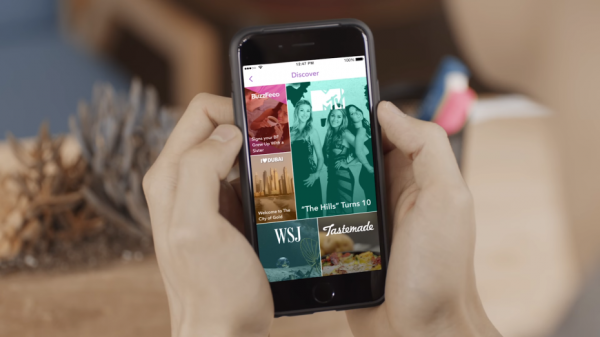With two swipes right on their phone screens, Snapchat’s 173 million daily users arrive at the app’s Discover page, where Publisher Stories—news articles by major media outlets—are featured daily. On Sept. 8, Snapchat announced on its blog that it will be partnering with universities across the United States to bring college newspaper content to the Discover page. With rapidly changing methods of internet and mobile media consumption, platforms like Snapchat are crucial for news outlets to stay relevant, particularly because the app’s largest user demographic is college-aged adults—roughly 78 million of daily users are between the ages of 18 and 24.
Featuring university gazettes on Snapchat is advantageous for students and journalists alike. For students, easy mobile access to their school’s newspaper will make it much easier to stay in the loop with campus news and events. Compared to the hassle of tracking down a print copy, or trying to navigate a web browser on their phone, Snapchat provides a convenient and accessible way of reading the news. Plus, incentives—such as maintaining streaks in Snapchat conversations with friends—keep daily traffic on the app very high. The average user opens the app 18 times per day and totals about 30 daily minutes—that’s enough to time to flip through a couple of articles. This method may vex traditionalists who feel bombarded by the influx of news on social media. Yet the fact is, employing technology to spread relevant stories to the public is an intelligent journalistic move. Additionally, students must be informed about the institutions in which they invest their time, money, and futures; so building readership of school newspapers will only benefit the student body, and Snapchat’s accessible nature can help facilitate this.
In the era of evolving news consumption, many sites such as Facebook have resorted to algorithms to curate their content. Snapchat’s approach, however, is unique in that it refuses to let algorithms manage its newsfeed. CEO and co-founder Evan Spiegel stated on the Snap Inc. blog that “Social media companies tell us what to read based on what’s most recent or most popular […] We count on editors and artists, not clicks and shares, to determine what’s important.” Another way Snapchat keeps people, not computers, in control is by giving users the option to construct personal newsfeeds. Users can hide news from publishers they don’t enjoy, or subscribe to the ones they want at the top of their feed. All of these settings maintain consumer agency, an aspect that benefits students because it keeps the power in their hands. Instead of being fed an automated pile of algorithmically selected articles, students remain more conscious and autonomous in their news consumption.
College papers, like mainstream media outlets, need to tap into social media networks if they want to maintain competitive readership. Snapchat is a promising way to do just that. Buzzfeed, one of Snapchat’s largest publishing partners, has said that 20 per cent of its views come from Snapchat. Print publications are also making use of the app. The New York Times exercises Snapchat as a tool to grow and engage with audiences in highly visual ways. Its Morning Briefing alone has 1.3 million subscribers on the app.
On top of boosted circulation, under this new partnership, college newspapers will receive a share of advertising revenues, in order to “help each school monetize and grow their newspaper.” This increase in resources will provide an opportunity for college papers to build their journalistic teams and invest in new production equipment. Further, as Snapchat points out, college media is where many writers and editors start their careers. The additional funding will also provide young journalists the opportunity to learn more about optimizing content for this modern news medium.
Having school newspapers on Snapchat’s Discover page will not only help students stay more easily informed, but it will also create opportunities for the aspiring journalists who work for the publications. Snapchat’s commitment to algorithm-free newsfeeds keeps an important aspect of human agency in students’ news consumption. Overall, partnering with social media sites is a smart move for journalists, because this new form of exposure may attract different kinds of readers by producing new ways to engage with audiences—a crucial tool for remaining relevant in the modern digital age. While Snapchat’s college news partners are exclusively American at the moment, Canada should be next on the list, so McGill readers can swipe through The McGill Tribune’s articles via Snapchat.








